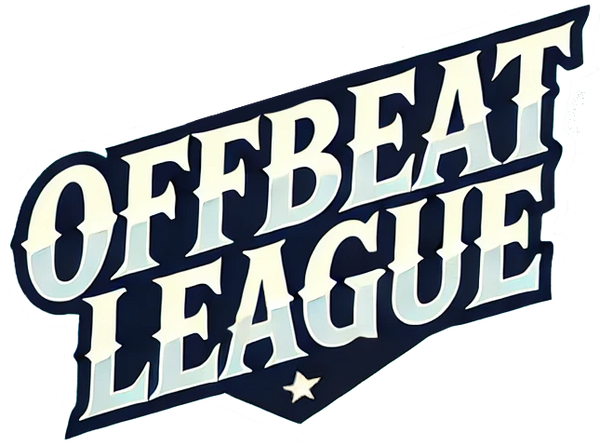Richard Feynman - Offbeat Luminaries
Offbeat Luminaries honors eccentrics and visionaries who challenged norms, bent reality, and reshaped the world in ways no one saw coming. These trailblazers defied convention, embraced the absurd, and transformed creativity into impact—embodying the very boundary-pushing spirit that fuels the Offbeat League.
Name: Richard Feynman
Origin: United States
Field of Rebellion: Quantum Mechanics and Popular Science Communication
Richard Feynman was not merely a physicist—he was a storyteller of the universe, a performer on the grandest stage of quantum mechanics. He defied the traditional image of the stiff, unapproachable scientist, instead embracing the role of a playful maverick who made physics not just accessible, but exhilarating. Whether explaining the mysteries of quantum electrodynamics, cracking safes at Los Alamos, or playing bongos in Brazil, Feynman approached everything with a spirit of curiosity and irreverence that made even the most complex concepts feel like an adventure.
"Nobody ever figures out what life is all about, and it doesn't matter. Explore the world. Nearly everything is really interesting if you go into it deeply enough."
Backstory
Richard Feynman was born in 1918 in Queens, New York, and his journey into science began with the quirky, imaginative encouragement of his father, who taught him to question the world around him. From tinkering with radios as a teenager to making groundbreaking contributions in quantum electrodynamics, Feynman’s life was a series of challenges against the accepted norms of his field. He served on the Manhattan Project during World War II, contributing to the atomic bomb's development, but was just as famous for his unconventional approach to teaching and his irreverent humor. Feynman became a legend in physics not only because of his scientific breakthroughs but also because he brought fun and curiosity to a field that often seemed rigid. His personality echoed a sense of play, challenging the seriousness often associated with science.
Notable Feats
Feynman's key contributions to quantum electrodynamics earned him the Nobel Prize in Physics in 1965, but his influence went far beyond technical papers. He was known for the invention of Feynman diagrams, a powerful visual tool for simplifying complex particle interactions. Outside the laboratory, Feynman became famous for his uncanny ability to explain the mysteries of quantum physics to non-scientists, making what seemed impossible to understand into something delightfully intuitive. His participation in the Rogers Commission for the investigation of the Space Shuttle Challenger disaster, where he demonstrated the O-ring failure with nothing more than ice water and straightforward reasoning, showcased his commitment to truth and clarity, cutting through bureaucratic fog with the sharpness of a practiced maverick.
Physics Without Patience
Feynman was brilliant, but he was also relentless in his pursuit of understanding—sometimes to the point of impatience with those who didn’t share his enthusiasm. His disregard for academic formality made him a beloved teacher but also a thorn in the side of rigid institutions. His curiosity sometimes led him down odd paths, from deciphering Mayan hieroglyphics to trying to visit the Soviet Union under questionable circumstances. He was never afraid to challenge authority, but this often made him difficult to work with for those who preferred order over curiosity.
Play First, Question Always: The Feynman Philosophy of Life
Feynman's life was marked by a playful irreverence. He was a safecracker at Los Alamos, a bongo player, and a prankster who frequented topless bars to work out physics problems. He didn't just solve equations; he embodied curiosity. Whether he was painting, playing drums in Brazil, or solving puzzles, Feynman approached life with an insatiable curiosity that often baffled and delighted those around him. His love for exploration, even beyond science, led him to dabble in diverse hobbies—his life was a constant experiment in joy.
The Science of Not Knowing
Feynman thrived in ambiguity, delighting in the idea that science was less about knowing and more about questioning. His embrace of uncertainty led him to redefine how physicists approached the unknown, making discomfort with uncertainty a virtue rather than a flaw. He saw the universe as a vast, shifting puzzle, where every answer only led to more questions. He encouraged students to not merely seek solutions but to revel in the beauty of the unexplained. From quantum mechanics to his own personal life, Feynman treated uncertainty as an invitation to play with possibilities rather than fear the unknown.
When Science Became Storytelling
Feynman didn't just do science; he reinvented how it was communicated. His unconventional teaching methods and refusal to adhere to traditional academic structures made physics a playground rather than a lecture hall. He turned scientific explanations into performances, complete with storytelling, visual metaphors, and unexpected digressions. His famous "Feynman Lectures on Physics" remain some of the most engaging educational materials ever created, blending rigor with an imaginative approach that made complex topics feel like delightful puzzles to be unraveled. He was an artist of explanation, constantly inventing new ways to make abstract ideas tangible, proving that creativity is just as vital in science as it is in art.
Legacy
Feynman’s legacy extends far beyond the equations and theories he left behind. He transformed science communication, proving that even the most abstract ideas could be made accessible and entertaining. His influence can be seen in every scientist who dares to make learning fun, in every educator who chooses curiosity over rigid instruction, and in every person who embraces the joy of not knowing. He redefined what it meant to be a scientist—not just a scholar, but a performer, a thinker, a challenger of norms. His legacy is not just in textbooks but in the way people think about science itself: as a thrilling, endless puzzle rather than a series of dry facts.
